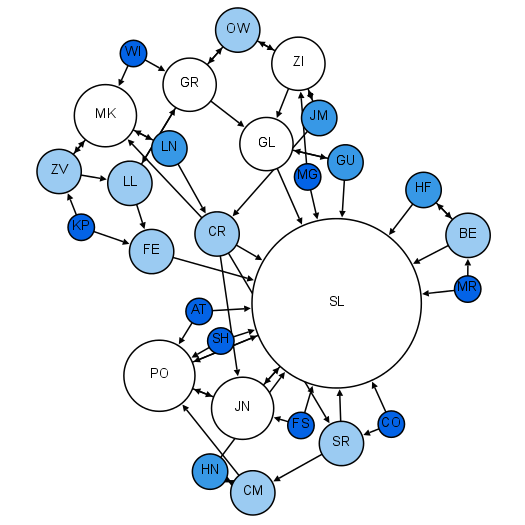Happy Birthday Mr. President
 •
by
•
by Starac202

Happy Birthday Mr. President Shawtyl0w,
May you live in health and prosperity many years to come!
*
Brothers in Arms
***
Company is a military unit, typically consisting of 80–250 soldiers and usually commanded by a major or a captain. Most companies are formed of three to six platoons, although the exact number may vary by country, unit type, and structure. Several companies are grouped to form a Battalion or Regiment, the latter of which is sometimes formed by several battalions.
Certain sub-units were raised as independent companies that reported to no higher unit headquarters.
***

Happy Birthday in the name of the Party *
DemNL
***
Battalion is a military unit. The use of the term "battalion" varies by nationality and branch of service. Typically a battalion consists of 300 to 800 soldiers and is divided into a number of companies. A battalion is typically commanded by a lieutenant colonel. In some countries the word "battalion" is associated with the infantry.
The term was first used in Italian as battaglione no later than the 16th century. It derived from the Italian word for battle, battaglia. The first use of battalion in English was in the 1580s, and the first use to mean "part of a regiment" is from 1708.
***

A fictional social network diagram. It consists of 165 Nodes n and 1851 Edges. The SVG-file was auto-generated by script. The underlying node/edge data can be extracted from the circle/line elements.
***
 Happy Birthday in the name of the Country *
Happy Birthday in the name of the Country *Netherlands
***
Regiment is a military unit. Their role and size varies markedly, depending on the country and the arm of service.
In Medieval Europe, the term "regiment" denoted any large body of front-line soldiers,[1] recruited or conscripted in one geographical area, by a leader who was often also the feudal lord of the soldiers.
By the 17th Century, a full-strength regiment was usually about a thousand personnel, and was usually commanded by a colonel.
***

Moreno's sociogram of a 2nd grade class
***
Brigade is a major tactical military formation that is typically composed of three to six battalions plus supporting elements. It is roughly equivalent to an enlarged or reinforced regiment. Two or more brigades may constitute a Division.
Brigades formed into divisions are usually infantry or armored (sometimes referred to as combined arms brigades). In addition to combat units, they may include combat support units or sub-units, such as artillery and engineers, and logistic units or sub-units. Historically, such brigades have sometimes been called brigade-groups. On operations, a brigade may comprise both organic elements and attached elements, including some temporarily attached for a specific task.
Brigades may also be specialized and comprise battalions of a single branch, for example cavalry, mechanized, armored, artillery, air defence, aviation, engineers, signals or logistic. Some brigades are classified as independent or separate and operate independently from the traditional division structure. The typical NATO standard brigade consists of approximately 3,200 to 5,500 troops. However, in Switzerland and Austria, the numbers could go as high as 11,000 troops. The Soviet Union, its forerunners and successors, mostly use "regiment" instead of brigade, and this was common in much of Europe until after World War II.
A brigade's commander is commonly a major general,[1]brigadier general, brigadier or colonel. In some armies, the commander is rated as a General Officer. The brigade commander has a self-contained headquarters and staff. The principal staff officer, usually a lieutenant colonel or colonel, may be designated chief of staff, although until the late 20th century British and similar armies called the position 'brigade-major'. Some brigades may also have a deputy commander. The headquarters has a nucleus of staff officers and support (clerks, assistants and drivers) that can vary in size depending on the type of brigade. On operations, additional specialist elements may be attached. The headquarters will usually have its own communications unit.
In some Gendarmerie forces, brigades are the basic-level organizational unit.

Standard NATO symbol for an infantry brigade
***
***
Division is a large military unit or formation, usually consisting of between 10,000 and 20,000 soldiers. In most armies, a division is composed of several regiments or brigades; in turn, several divisions typically make up a corps. In most modern militaries, a division tends to be the smallest combined arms unit capable of independent operations; this is due to its self-sustaining role as a unit with a range of combat troops and suitable combat support forces, which can be arranged into various organic combinations.
***
***

Happy Birthday in the name of the International Military Cooperation A Division Alpha Tester
- International Security
- Force Interoperability
***
Starac202 General-purpose Machine Gunner
Reconnaissance Squad
Command Company Artillery Regiment
1980 - 1981
*
Signal
**
Network
***
Command
****

****

Korps Commandotroepen | Koninklijke Landmacht
Commando Corps | Royal Netherlands Army
**** Netherlands Chief of Defence - Commandant der Strijdkrachten
**** Serbian Chief of Defence - Начелник Генералштаба Војске Србије
Intelligence-reconnaissance | A Division Alpha Tester
Yours,
Old Man | Starac202 | Alpha Tester

Defensie-attaché
Een militair attaché[1] , ook wel defensie-attaché, is een militair, meestal een officier, die aan een ambassade of een internationale organisatie (bijvoorbeeld de OVSE of de NAVO) is verbonden. Net zoals andere diplomaten genieten militair attachés diplomatieke onschendbaarheid. Dit is vastgelegd in het Verdrag van Wenen inzake diplomatiek verkeer van 1961. In dat verdrag staat ook dat ontvangende staat mag eisen dat de namen van militaire attachés vooraf ter goedkeuring worden voorgelegd.
De militair attaché vertegenwoordigt de strijdkrachten en hun leiding in de ontvangende staat, en fungeert daar als contactpersoon voor het Ministerie van Defensie en haar krijgsmacht. Hij verzamelt en rapporteert gegevens die hij vanuit politiek, militair, sociaal-economisch, technisch of historisch oogpunt van belang acht. Ook onderhoudt de militair attaché nauw contact met verschillende vertegenwoordigers van de defensieorganisatie van het gastland en met andere buitenlandse militair attachés die in het gastland geaccrediteerd zijn. [2] De belangen van de militairen die zich voor zijn land en in dienstverband in zijn ambtsgebied bevinden worden door hem behartigd.
Militair attachés zijn niet op iedere ambassade te vinden, soms zijn ze voor meer landen in dezelfde regio geaccrediteerd[3].
De grenzen tussen het op wettige wijze vergaren van belangrijke informatie en ongeoorloofde activiteiten, in het bijzonder spionage, kunnen niet altijd duidelijk worden getrokken. Het komt voor dat militair attachés en/of hun diplomatieke medewerkers worden uitgewezen op verdenking van spionage.[4]


Comments